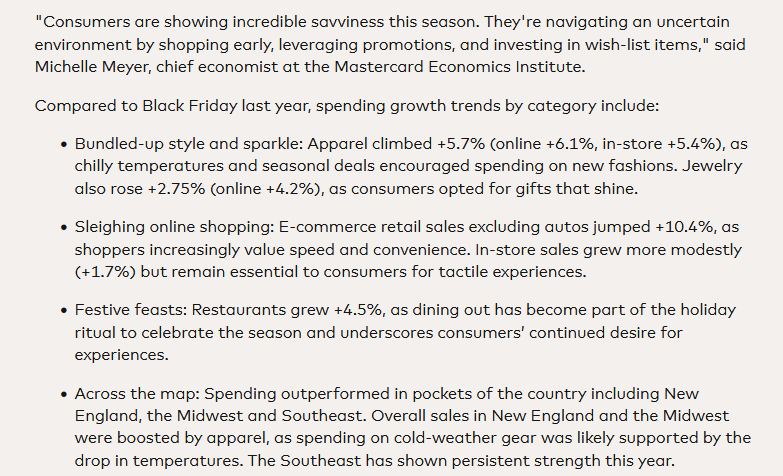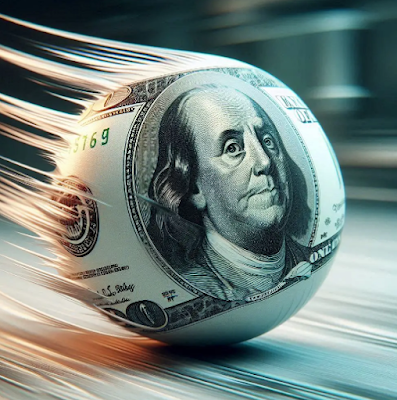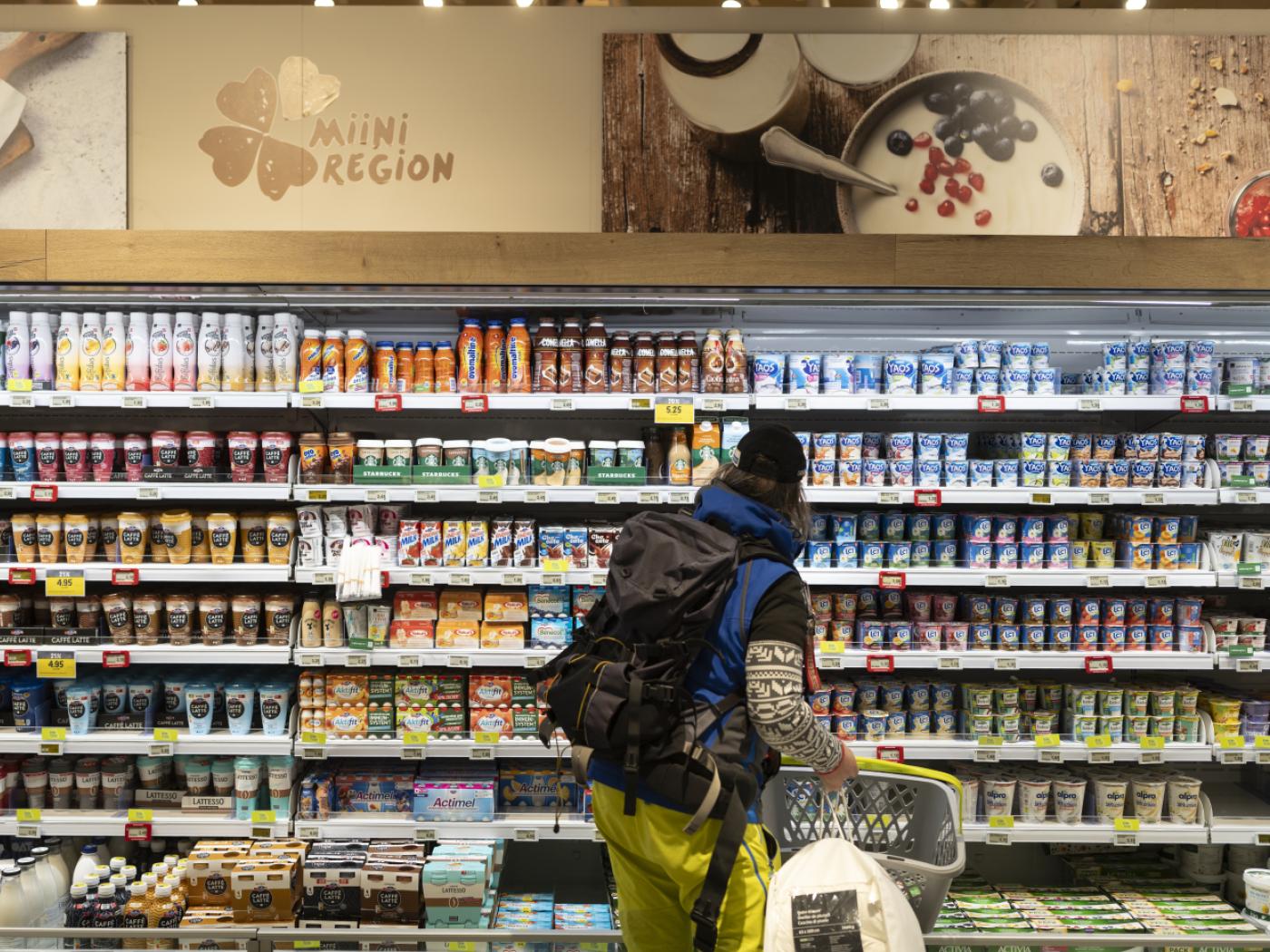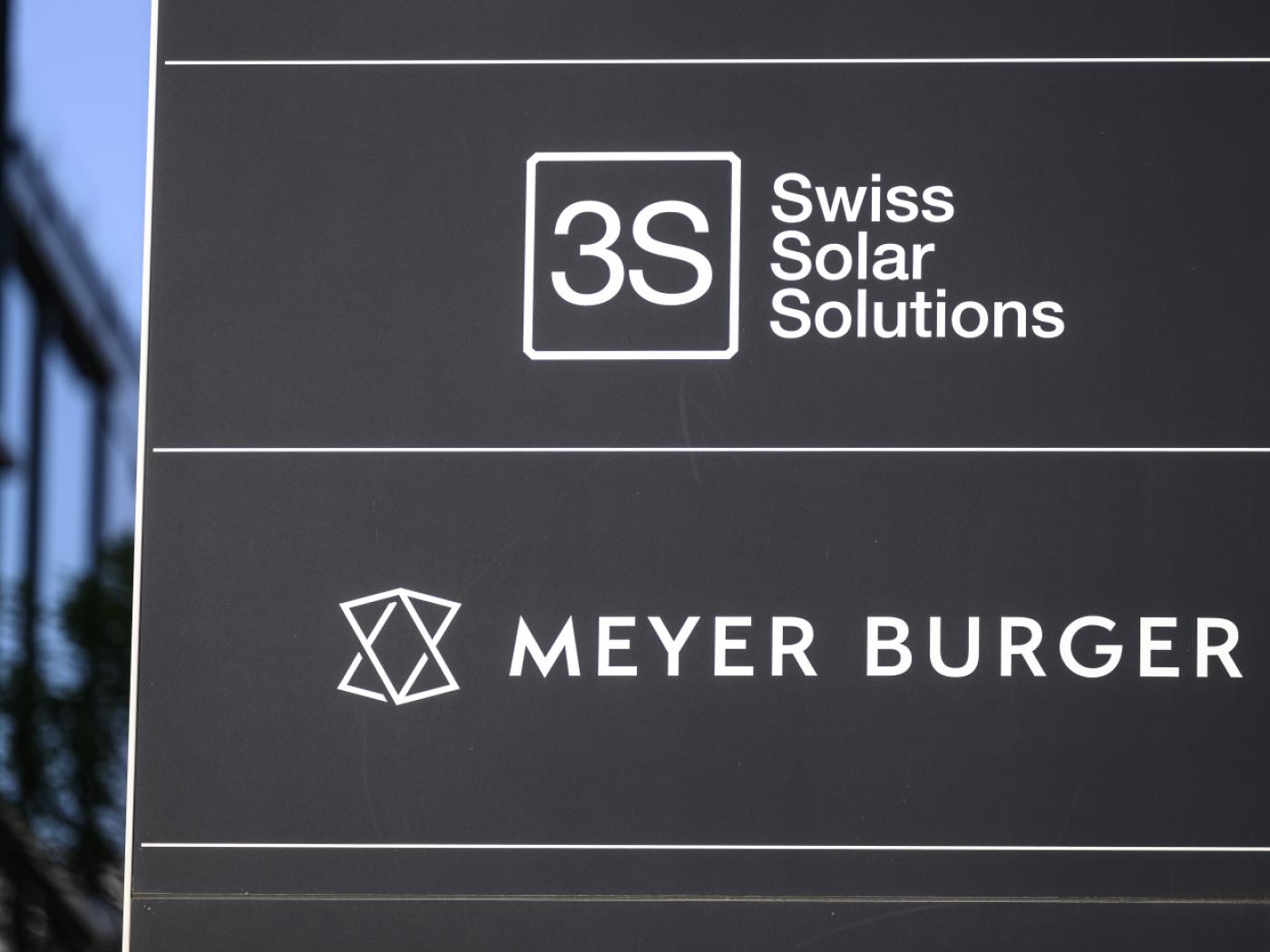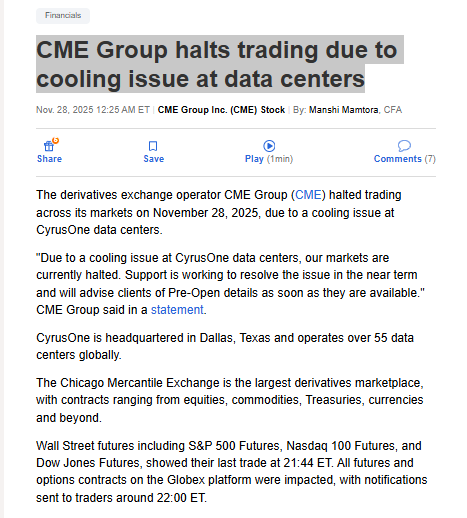We do not like Purchasing Power or Real Effective Exchange Rate (REER) as measurement for currencies. For us, the trade balance decides if a currency is overvalued. Only the trade balance can express productivity gains, while the REER assumes constant productivity in comparison to trade partners.
Who has read Michael Pettis, knows that a rising trade surplus may also be caused by a higher savings rate while the trade partners decided to spend more. This is partially true. Recently Europeans started to increase their savings rate, while Americans reduced it. This has led to a rising trade and current surplus for the Europeans. But also to a massive Swiss trade surplus with the United States, that lifted Switzerland on the U.S. currency manipulation watch list.
To control the trade balance against this “savings effect”, economists may look at imports. When imports are rising at the same pace as GDP or consumption, then there is no such “savings effect”.
After the record trade surpluses, the Swiss economy may have turned around: consumption and imports are finally rising more than in 2015 and early 2016. In March the trade surplus got bigger again, still shy of the records in 2016.
Swiss National Bank wants to keep non-profitable sectors alive
Swiss exports are moving more and more toward higher value sectors: away from watches, jewelry and manufacturing towards chemicals and pharmaceuticals. With currency interventions, the SNB is trying to keep sectors alive, that would not survive without interventions.
At the same time, importers keep the currency gains of imported goods and return little to the consumer. This tendency is accentuated by the SNB, that makes the franc weaker.
Texts and Charts from the Swiss customs data release (translated from French).
Exports and Imports YoY DevelopmentIn the second quarter of 2019, exports increased by 1.4% and imports by 0.2%. The two traffic departments have thus set a record quarterly result. The trade surplus, on the other hand, stood at 6.8 billion francs. In short |
Swiss exports and imports, seasonally adjusted (in bn CHF), Q2 2019(see more posts on Switzerland Exports, Switzerland Imports, )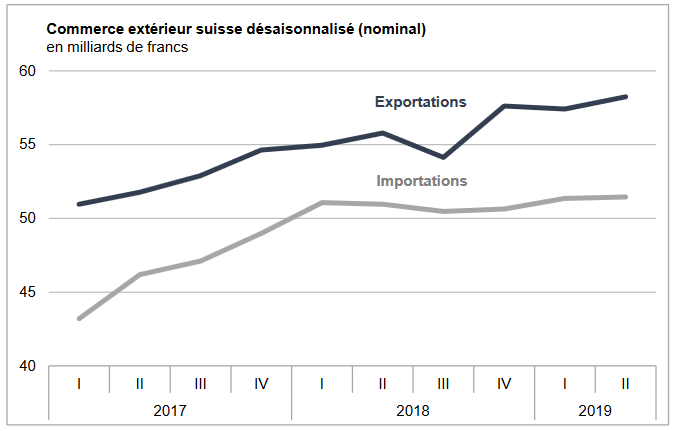 Source: newsd.admin.ch - Click to enlarge |
Overall evolutionIn the second quarter of 2019, seasonally adjusted exports rose by 1.4% (actual: -1.0%) to a record level of CHF 58.2 billion. They have been evolving since the beginning of 2017 on a positive wave. Imports were almost stagnant in a quarter with + 0.2% (real: + 0.8%) and have been flat since early 2018. They nevertheless recorded a historic result of 51.5 billion francs. The trade balance closed with a surplus of 6.8 billion francs. |
Switzerland Trade Balance, June 2019(see more posts on Switzerland Trade Balance, )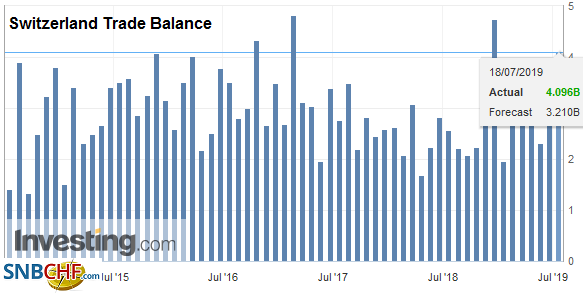 Source: investing.com - Click to enlarge |
ExportsExports: chemistry-pharma accounts for 80% of the increase In the second quarter of 2019, export growth was driven by chemicals and pharmaceuticals (+ 2.4%, +667 million francs) and, to a lesser extent, vehicles (+ 9.3%, +127%). million, airplanes, other goods). The prime mover has been on a clearly ascending slope for more than two years. With the exception of drugs, which recorded a second decline in a row (-1.1%), all sectors progressed within the chemistry-pharmacy sector. Active ingredients (+340 million francs) as well as raw materials and basic materials (+217 million) were particularly dynamic. Exports from the machinery and electronics sector posted a slight increase (+ 0.3%), thus seeing their negative trend displayed since mid-2018 lose momentum. Watchmaking saw its sales stagnate at CHF 5.4 billion in the second quarter of 2019, while precision instruments declined slightly (-0.4%). While both sectors continue to evolve on an uptrend, they are showing signs of slowing down. Geographically, the increase in exports took root in Europe (+695 million francs) and in North America (USA: +245 million). Third largest export market, Asia has been treading water. On the European continent, Germany, Austria and the Netherlands came to the fore with a combined increase of 442 million francs driven by chemicals and pharmaceuticals. In Asia, the rise of Singapore and China – to which exports have reached record levels – opposed the decline in Hong Kong and Japan. |
Swiss Exports per Sector Q2 2019 vs. 2018(see more posts on Switzerland Exports, Switzerland Exports by Sector, )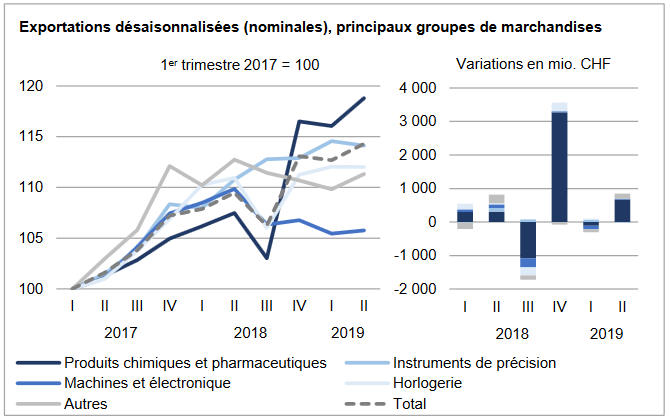 Source: newsd.admin.ch - Click to enlarge |
ImportsPaper and graphic arts products: imports above the billion franc mark for the first time in five years On the import side, the results were characterized by considerable heterogeneity in the second quarter of 2019: the rise in the other jewelery group (+436 million francs) and the paper and graphic arts products sector ( +117 million) contrasted with the decline in vehicles and metals. These last two sectors thus continued their crossing of the desert. As a flagship sector, chemicals and pharmaceuticals have stagnated at a high level. Here, the inflow of immunological products fell (-431 million francs) while those of drugs took the elevator. The machinery and electronics group increased by 0.4%, despite a plunge of CHF 130 million in the electrical and electronics industry. The sector has thus presented a congruent evolution with its long-term growth. Among the main supply markets, only North America gained ground (+ 4.5%, USA: +321 million francs). Despite this increase, the North American continent has been in a negative spiral since the end of 2017. Imports originating in Asia stagnated while those in Europe, after two quarters of growth, lost 2%. The fall of the United Arab Emirates (-277 million, gold jewelry for redesign) has sealed the result of the Asian continent. In Europe, the cumulative decline of Ireland, Belgium and France has exceeded half a billion francs. On the other hand, “made in UK” inflows rose for the fourth quarter in a row (+153 million). |
Swiss Imports per Sector Q2 2019 vs. 2018(see more posts on Switzerland Imports, Switzerland Imports by Sector, )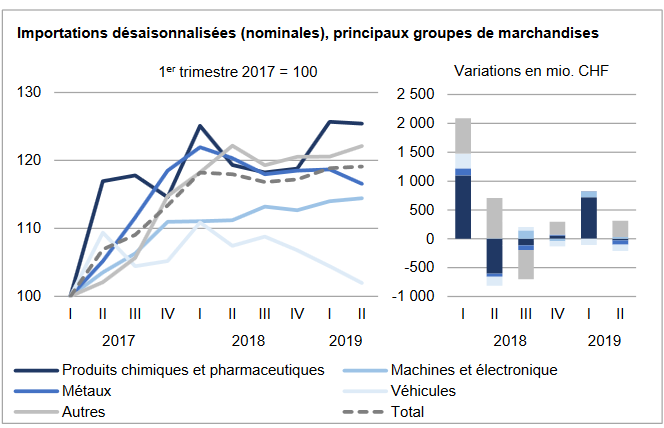 Source: newsd.admin.ch - Click to enlarge |
Full story here Are you the author? Previous post See more for Next post
Tags: newsletter,Switzerland Exports,Switzerland Exports by Sector,Switzerland Imports,Switzerland Imports by Sector,Switzerland Trade Balance

























